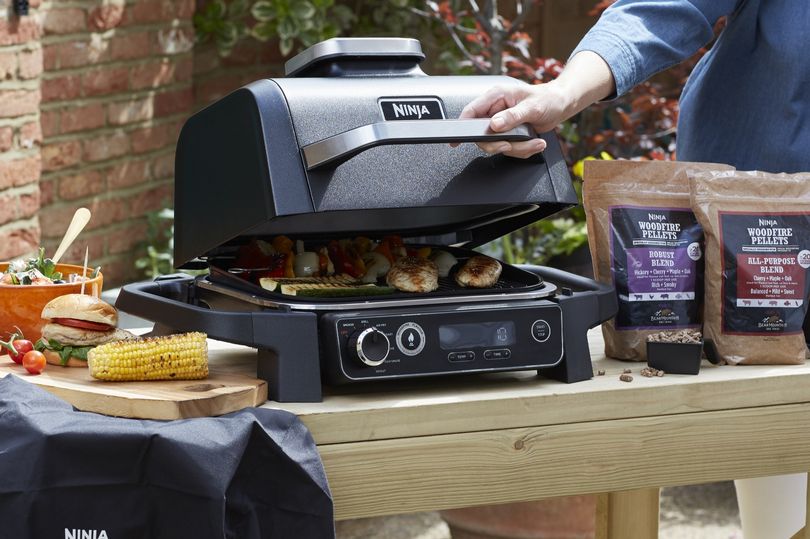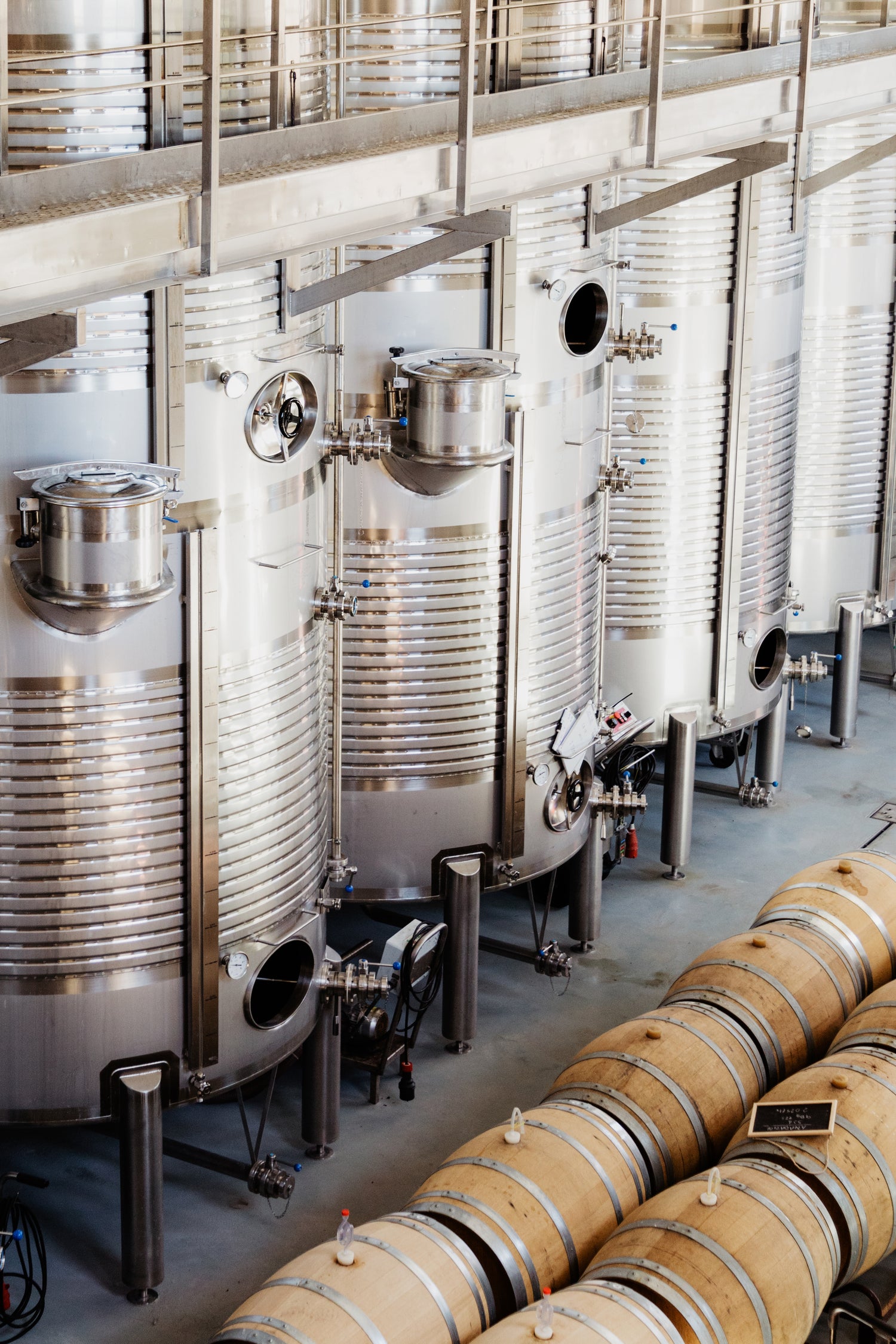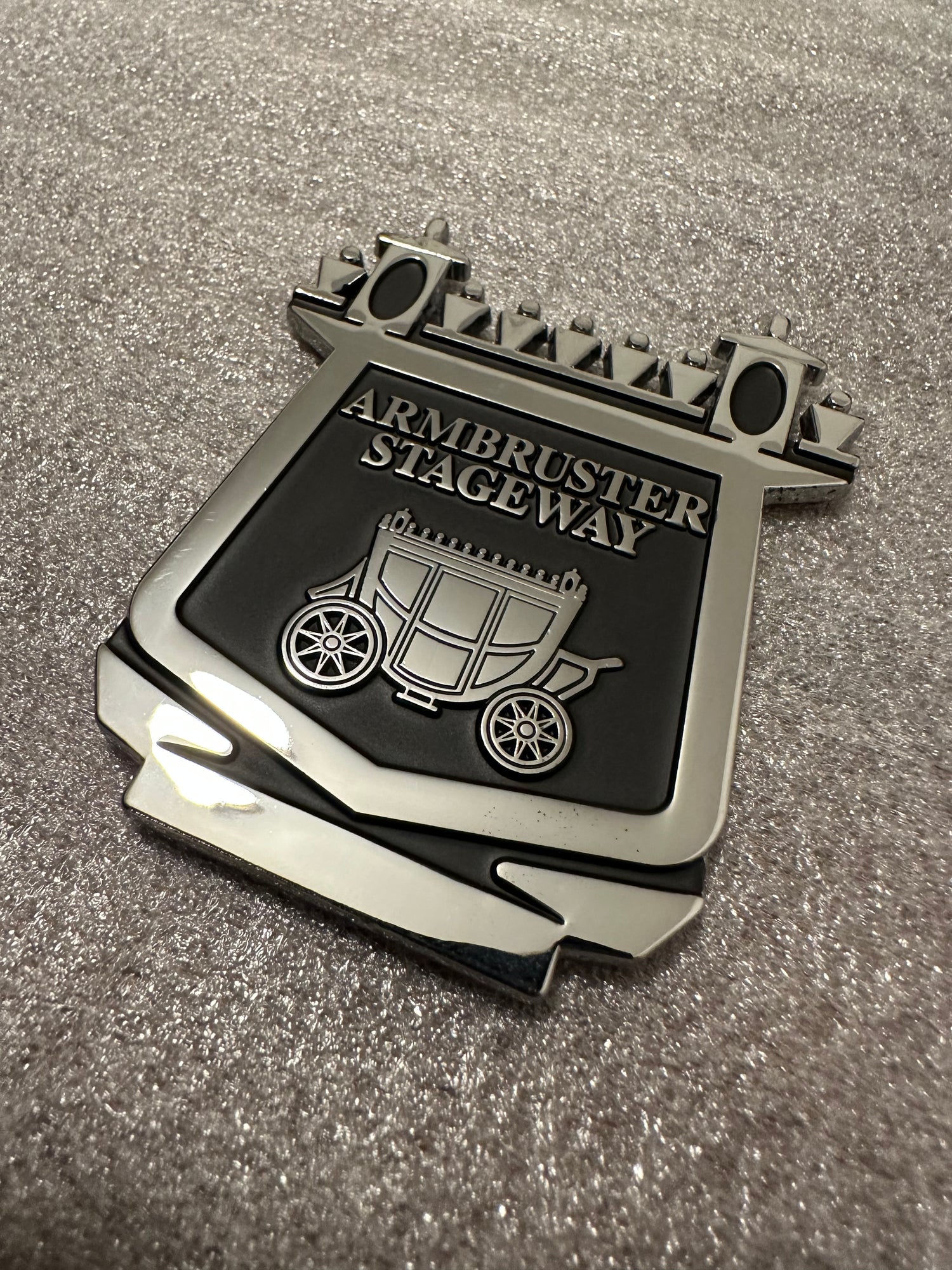
BBQ Badges For On-Product Branding
BBQ badges play a crucial role in on-product branding, offering significant benefits that can enhance your business’s market presence and customer perception. Effective branding on products like BBQs creates a memorable identity that resonates with consumers, making your product easily recognizable and preferred over competitors. This strong visual identity not only helps to differentiate your BBQs in a crowded market but also adds a layer of perceived quality and value. Moreover, well-executed branding, such as through high-quality badges, builds trust with your customers. It shows commitment to quality and attention to detail, which are key factors that consumers consider when making purchasing decisions. This trust can translate into increased customer loyalty and can even allow you to command premium prices for your products due to the enhanced brand perception.

BBQ Emblem Material Selection
When selecting materials for manufacturing BBQ badges, it's crucial to match the badge's material with that of the grill to prevent issues from thermal expansion differences. Stainless steel 304 is often used for its excellent resistance to corrosion and high-temperature tolerance. However, its thermal expansion coefficient ranges from 17.2 to 18.4 µm/m°C, which might not always align well with other materials used in BBQ grills. The differential expansion between mismatched materials can lead to distortion and mechanical stresses, especially under high heat conditions. To ensure durability and maintain structural integrity, it's important to choose materials that are compatible in terms of thermal properties to prevent bending or damage over time. This careful selection ensures that your BBQ badges not only enhance the aesthetic appeal but also meet functional demands in varying temperatures.
TYPES OF STAINLESS STEEL: 304, 304L, 316, 316L, 430
What Is Thermal Expansion?
Thermal expansion is a critical concept in material science, particularly because it explains how materials change their dimensions in response to temperature variations. This phenomenon is essential for you to understand as it impacts the design and functionality of various products and structures, from everyday items to sophisticated engineering systems.
When materials are heated, their particles move faster and occupy more space, leading to expansion. Conversely, cooling causes materials to contract as the particles slow down and come closer together. Each material has a specific coefficient of thermal expansion (CTE), which quantifies how much it expands or contracts per degree of temperature change. These coefficients are crucial for selecting materials that will work together without causing structural damage over time due to differing expansion rates under the same temperature changes. For instance, in engineering applications like bridge construction, thermal expansion is accounted for by incorporating expansion joints to prevent undue stress and potential damage. Similarly, in precision instruments or components exposed to variable temperatures, understanding and managing thermal expansion ensures reliability and accuracy.
In practical terms, managing thermal expansion is about ensuring safety and longevity of structures and devices, making it a cornerstone of effective material science and engineering practices.

Manufacturing & Shaping Options
When considering the manufacturing methods for toolbox badges, you have several robust options, each suited to different needs and specifications. Powder Injection Molding (PIM) is particularly effective for creating detailed, high-volume parts that must withstand high temperatures. This method molds metal powders mixed with a binder into a "green" shape before sintering in a furnace to achieve final strength and precision
Die casting is another viable option, ideal for mass production of complex shapes with high dimensional accuracy. Utilizing molten metal injected under high pressure into molds, it’s well-suited for detailed designs in materials like aluminum, zinc & steel.
Metal stamping is a versatile choice, especially effective for creating durable components from sheet metal through processes like punching, bending, and embossing. This method is highly cost-effective, providing excellent repeatability for large production runs.
Lastly, metal forging involves the shaping of metal through compressive forces, offering superior mechanical properties like strength and durability. It’s best for parts requiring robust structural integrity. While typically used for simpler shapes, the technique ensures exceptional material strength, making it suitable for heavy-duty applications.
What is most commonly utilized manufacturing combination method?
When you opt for stainless steel 304 with a chemically etched surface finish and diamond cut lettering for your BBQ badges, you're selecting a highly resilient and visually striking manufacturing combination. This method leverages the robust qualities of stainless steel 304, known for its excellent resistance to oxidation and corrosion at high temperatures, which is crucial for BBQ applications. The chemical etching process allows for precise and intricate designs, enhancing the visual appeal without compromising the metal's integrity. Diamond cut lettering adds a dimensional, reflective quality to the badge, making your brand stand out even in high-heat conditions.
While this is a popular choice due to its durability and aesthetic appeal, it's important to remember that it's not the only option available. Trailblazer Badges offers a vast array of other materials and combinations, each providing unique benefits. Depending on your specific needs, whether they be cost, durability, or design complexity, there are many other manufacturing methods and material choices that could also serve your project well, allowing you to tailor the final product to your precise specifications.

Surface Processes
An aesthetically appealing surface finish on your toolbox badges is crucial as they are, effectively, the face of your product. They not only catch the eye but also convey the quality and essence of your brand. Stainless steel, renowned for its durability and corrosion resistance, offers various surface processes or finishes that enhance both functionality and appearance. Popular options include chemical etching coupled with color filling, which allows for vibrant and durable designs. Sandblasting gives a roughened texture, ideal for preparing surfaces for further treatments. Screen printing can apply detailed, colorful graphics, while engraving offers a permanent design solution that resists wear over time. Diamond cutting and the hairline finish both provide unique aesthetic appeals; the former offers a shimmering faceted effect and the latter a sleek, brushed look. Crucially, these processes can be combined to meet specific design needs, enhancing both the visual and functional properties of the badges. For example, you might combine etching with diamond cutting to create a badge that catches the light and stands out visually while maintaining detailed, precise imagery
-
Adhesive
Learn MoreFor securing BBQ badges exposed to high temperatures, utilizing the right adhesive is critical to ensure durability and performance. 3M offers specialized high-temperature adhesives designed specifically for such demanding conditions. These adhesives are engineered to maintain their bond integrity over extended periods of time, even when subjected to the intense heat of BBQ environments. This capability is crucial for BBQ badges, as it ensures that they remain securely attached and maintain their aesthetic appeal despite the challenging conditions. While 3M's high-temperature adhesives are a popular and reliable choice, it's important to note that the market also provides other options. Depending on your specific requirements and budget, there are various adhesives available that can meet different thermal resistance and cost-effectiveness needs. Each adhesive option comes with its own set of benefits, allowing you to choose the best fit for your product’s design and operational conditions.
-
Rivet/Mounting Holes
Learn MoreUsing rivets or mounting holes is another effective method for attaching BBQ badges, offering a mechanical solution that ensures robust durability and resistance to high temperatures. This method involves creating small holes in the badge, which are then aligned with corresponding parts on the BBQ itself, and secured using rivets. This not only provides a permanent and secure attachment but also adds a rugged, industrial aesthetic that can enhance the overall design of the BBQ. Rivets are particularly useful in environments where adhesives might fail due to extreme conditions or where a non-permanent attachment is undesirable. Mounting with rivets guarantees that badges remain firmly in place, regardless of heat exposure or mechanical stress. Additionally, this method allows for easy removal and replacement of badges if necessary, offering flexibility in maintenance and updates. This approach is highly reliable, making it a preferred choice for applications requiring maximum resilience and longevity.
-
Tabs
Learn MoreUsing tabs as an attachment method for BBQ badges is an efficient and straightforward option, particularly suitable for environments where quick and easy installation is beneficial. This approach involves badges designed with integrated tabs that fit into pre-made slots or openings on the BBQ. The tabs are simply slid into place, securing the badge without the need for tools or additional fasteners. This method not only speeds up the assembly process but also allows for easy badge replacement or removal for cleaning and maintenance. Tabs ensure that the badges are held firmly, reducing the risk of detachment due to vibration or thermal expansion and contraction typically experienced in high-temperature environments. This method provides a clean and seamless look, preserving the overall design aesthetics of the BBQ. Additionally, tab attachment minimizes damage to the surface of the BBQ, an advantage over methods like drilling which require permanent alterations to the equipment.
Frequently Asked Questions
Why is branding important for BBQ grills?
Boosting Brand Visibility
Enhanced Product Value: Incorporating badges, emblems, and nameplates on your BBQ grills can significantly enhance the perceived value of your products. These elements serve as marks of quality and craftsmanship, allowing you to differentiate your offerings in a crowded market. This differentiation can justify a higher price point, improving your profit margins by appealing to consumers' desire for premium-quality goods.
Consistent Brand Messaging: Badges and emblems act as constant reminders of your brand, reinforcing your identity every time a customer uses your grill. They help maintain brand consistency across different products and marketing channels, ensuring that your brand message is clear and impactful. This consistent branding helps build a reliable image that attracts loyal customers.
Resolving Client Challenges: By enhancing the aesthetic appeal of your products, you directly address common customer concerns about product quality and longevity. High-quality badges and emblems are resistant to the harsh conditions typical of BBQ usage, such as high temperatures and exposure to elements, ensuring that they remain visually appealing for a long time. This durability reduces the need for frequent replacements, offering better long-term value to your customers.
Investing in quality badges, emblems, and nameplates is a strategic move that extends beyond mere decoration. It is an investment in your brand's future, enhancing product appeal, ensuring customer satisfaction, and ultimately driving your business success. By focusing on these elements, you provide clear solutions to potential client problems, such as the need for durable, high-quality, and visually appealing products that stand out in the market.
What is the lead time for BBQ emblems, badges and nameplates?
When you place an order for BBQ emblems, badges, and nameplates, the standard lead time is 3 weeks from the moment your artwork has been approved. If you need assistance with design or artwork, a team of skilled designers is here to help, though this may extend the lead time by an additional week as we work together to perfect your visuals. While lead times can vary slightly, we consistently aim to meet the 3-week timeframe. Once your order is confirmed, we'll provide you with an exact expected date of shipment, ensuring transparency and keeping you informed every step of the way. This process is designed to be smooth and efficient, making sure you receive your high-quality custom products right when you need them.
What if I don't have ready artwork?
If you don't have artwork ready for your BBQ badge, that is okay! Our team of designers is here to assist you in creating the perfect artwork at no additional cost. However, to help us get started, we'll need a vector file or an image (such as JPG, PNG, PDF) of your logo. Additionally, please provide the specific lettering you'd like on the badge and any other relevant details or preferences you may have. This information will be crucial in helping craft a design that aligns perfectly with your vision. The goal is always to make the process as seamless and stress-free for you as possible, ensuring you get exactly what you need for your branding efforts.
Is shipping free on orders?
Free shipping on all orders across the US, ensuring that the process is as seamless and cost-effective for you as possible. When you order your BBQ emblems, badges, or nameplates, there are no hidden charges; the price you see is exactly what you pay. This hassle-free approach allows you to focus on choosing the perfect products for your needs without worrying about extra shipping fees. We handle the logistics so you can enjoy a smooth, straightforward experience from start to finish.
If we are unsure about the materials & manufacturing process to chose, can you help us?
Trailblazer is committed to helping you select the ideal materials, manufacturing methods, and surface processes for your BBQ badges, ensuring they perfectly match the application and your specific needs and desires. Our approach involves a thorough consultation to understand your requirements and the environment where the badges will be used. Guiding you through the various options, from durable metals suited for high heat to advanced surface treatments that enhance visual appeal and longevity. Before finalizing the design, we provide detailed explanations and show samples to ensure you're fully satisfied with the choices. This process guarantees that the final product not only meets but exceeds your expectations, providing a tailored solution that addresses all your concerns and adds significant value to your brand.
Can adhesive and rivet holes be used together as an attachment/fitting?
For your BBQ emblems and badges, combining adhesive backing with rivet holes can provide an exceptionally secure attachment method. This dual approach ensures that your badges are firmly affixed and can withstand the rigors of outdoor grilling environments. Using adhesive provides immediate strong adhesion to the grill's surface, ideal for quick and easy application. Additionally, incorporating rivet holes allows for mechanical fastening, which adds an extra layer of durability and security. This combination is perfect if you need your badges to stay in place through frequent use and varying temperatures. We'll help you integrate both options seamlessly, ensuring that your badges not only look professional but are also built to last.

